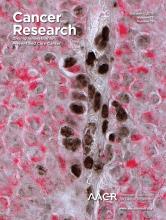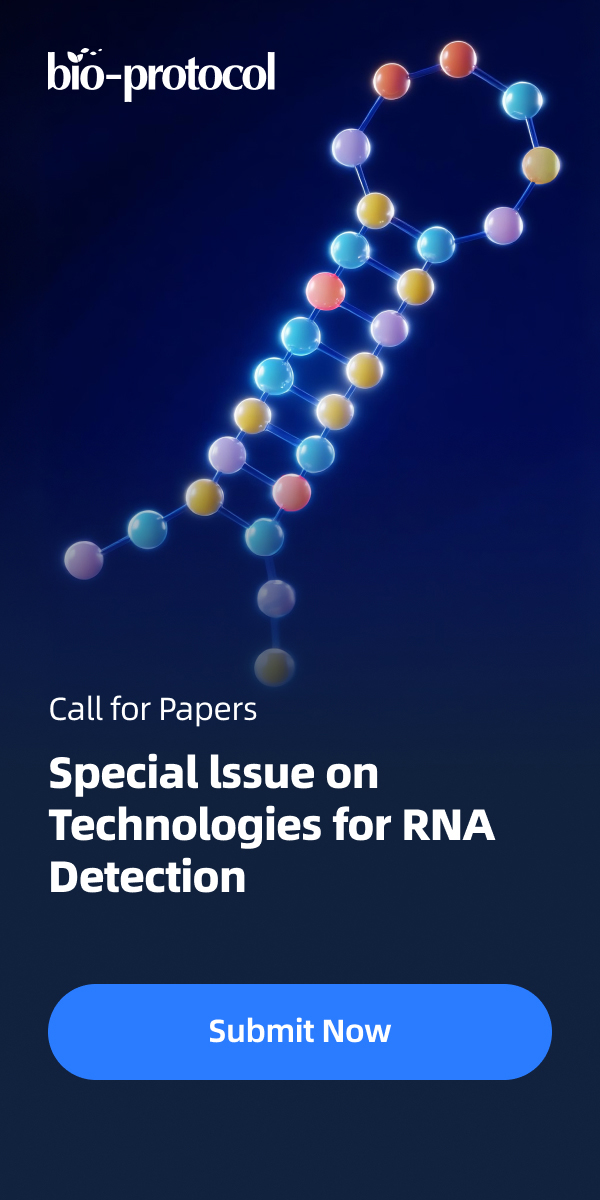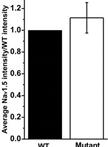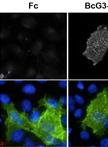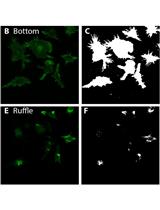- EN - English
- CN - 中文
Evaluation of Angiogenesis Inhibitors Using the HUVEC Fibrin Bead Sprouting Assay
采用HUVEC纤维蛋白珠催芽试验评估血管生成抑制因子
发布: 2016年10月05日第6卷第19期 DOI: 10.21769/BioProtoc.1947 浏览次数: 15181
评审: Lee-Hwa TaiAnita UmeshAnonymous reviewer(s)
Abstract
Angiogenesis, the growth of new blood vessels from pre-existing vessels, is a critical process that occurs during normal development and tumor formation. Targeting tumor angiogenesis by blocking the activity of vascular endothelial growth factor (VEGF) has demonstrated some clinical benefit; nevertheless there is a great need to target additional angiogenic pathways. We have found that the human umbilical vein endothelial cell (HUVEC) fibrin bead sprouting assay (FBA) is a robust and predictive in vitro assay to evaluate the activity of angiogenesis inhibitors. Here, we describe an optimized FBA protocol for the assessment of biological inhibitors of angiogenesis and the automated quantification of key endpoints.
Background
Angiogenesis, the growth of new blood vessels from pre-existing vessels, is a physiological process that occurs during wound healing and normal development. Angiogenesis is a complex and highly regulated process involving the tight coordination of endothelial cell proliferation, differentiation, migration, matrix adhesion, and cell-to-cell signaling. Angiogenesis is also critically involved in tumor development and metastasis. Indeed, targeting tumor angiogenesis by blocking the activity of vascular endothelial growth factor (VEGF) has demonstrated clinical benefit. Since tumors do eventually develop resistance to VEGF-targeted therapy, there is a great need to target additional angiogenic pathways. We have found that the human umbilical vein endothelial cell (HUVEC) fibrin bead sprouting assay (FBA) (Nakatsu et al., 2007; Nakatsu and Hughes, 2008; Nehls and Drenckhahn, 1995) is a robust and predictive in vitro assay to evaluate the activity of angiogenesis inhibitors. This assay recapitulates key aspects of angiogenesis such as lumen formation, endothelial cell polarization and dependency on stromal cells, and is correlative with the activities of angiogenesis inhibitors as observed in in vivo tumor studies (Figures 1 and 2) (Eichten et al., 2013; Holash et al., 2012; Kuhnert et al., 2015; Noguera-Troise et al., 2006). Here we describe an optimized FBA protocol for the assessment of biological inhibitors of angiogenesis and the automated quantification of key endpoints, such as the number of endothelial cells or branch points, as well as sprout length and area (Figure 3). To illustrate the spectrum of treatment outcomes in the FBA, the effects of three different angiogenesis inhibitors [aflibercept, Dll4 blocking monoclonal antibody (Dll4 MAB) and anti-Integrin a6 antibody GOH3] on endothelial sprouting have been included in the protocol.
Materials and Reagents
- 50 ml conical tubes (Corning, Falcon®, catalog number: 352070 )
- Cytodex-3 beads (GE Healthcare, Amersham Pharmacia Biotech, catalog number: 17-0485-01 )
- Aspirator
- FACS tubes (5 ml) (Corning, Falcon®, catalog number: 352063 )
- 15 ml conical tubes (Conring, Falcon®, catalog number: 352099 )
- 1.5 ml centrifuge tube
- 24 well plate (Corning, Falcon®, catalog number: 351147 )
- 0.22 μm filter (VWR, catalog number: 28145-501 )
- Human umbilical vein endothelial cells (HUVEC) and HUVEC complete media (Lonza, catalog numbers: C2517A and CC3162 )
Note: Optimal at passage 2-4. - Normal human lung fibroblasts (NHLF) (Lonza, catalog number: CC2512 )
- Sigmacote siliconizing reagent (Sigma-Aldrich, catalog number: SL2-25ML )
- Distilled water (Thermo Fisher Scientific, GibcoTM, catalog number: 15230-162 )
- DPBS (Thermo Fisher Scientific, GibcoTM, catalog number: 14040-141 )
- Fibrinogen from bovine plasma (Sigma-Aldrich, catalog number: F8630-1G )
- Thrombin from bovine plasma (Sigma-Aldrich, catalog number: T3399-1KU )
Note: This product has been discontinued. - Aprotinin (Sigma-Aldrich, catalog number: A1153-10MG )
- Clonetics EGM-2 bullet kit (Lonza, catalog number: CC3162 )
- Trypsin/EDTA (0.025% trypsin/0.75 mM EDTA) (EMD Millipore, catalog number: SM-2004-C )
- Aflibercept (VEGF-Trap) (Regeneron Pharmaceuticals)
- Dll4 blocking monoclonal antibody (Dll4 MAB) (Regeneron Pharmaceuticals)
- Rat anti-human integrin α-6 antibody, GoH3 (BD, BD PharmingenTM, catalog number: 555734 )
- Paraformaldehyde (PFA) (16%) (Electron Microscopy Sciences, catalog number: 15710 )
- Triton X-100 (Sigma-Aldrich, catalog number: T8787-100ML )
- Phalloidin-Tetramethylrhodamine B isothiocyanate (Phalloidin-TRITC) (Sigma-Aldrich, catalog number: P1951-.1MG )
- FGM-2 bullet kit (Lonza, catalog number: CC3132 )
- Hoechst 33258, pentahydrate, bis-benzimide (Thermo Fisher Scientific, Molecular ProbesTM, catalog number: H3569 )
- Fibrinogen solution (see Recipes)
- Thrombin stock solution (see Recipes)
- Aprotinin stock solution (see Recipes)
Equipment
- Siliconized glass bottles (Corning, PYREX®, catalog number: 1395-100 )
- Laminar flow hood
- Water bath (PolyScience, catalog number: WB05A11B )
- T25 flasks (Corning, catalog number: 430639 )
- Centrifuge
- Incubator
- P1000 pipette
- 24 well glass bottom sensoPlate (Greiner Bio One, catalog number: 662892 )
- Cell counter (Nexcelom BioScience, model: Cellometer Auto 1000 )
- Microscope (Nikon, model: Eclipse Ti-S )
- ImageXpress® MICRO XL (Molecular Devices)
Software
- MetaXpress (Molecular Devices)
Note: MetaXpress software (MX) from Molecular Devices is optimized to perform with the ImageXpressMICRO imaging systems. MX is used both to control image acquisition and to perform image analysis. Necessary features of MX utilized in FBA image acquisition and analysis are: 1) Image acquisition: Laser-based autofocus, Z-stack acquisition; 2) Image analysis: 'Tube Formation' image analysis application module, an interactive Custom Module.
Procedure
文章信息
版权信息
© 2016 The Authors; exclusive licensee Bio-protocol LLC.
如何引用
Winters, L., Thambi, N., Andreev, J. and Kuhnert, F. (2016). Evaluation of Angiogenesis Inhibitors Using the HUVEC Fibrin Bead Sprouting Assay. Bio-protocol 6(19): e1947. DOI: 10.21769/BioProtoc.1947.
分类
癌症生物学 > 血管生成 > 癌症治疗
细胞生物学 > 细胞结构 > 细胞表面
您对这篇实验方法有问题吗?
在此处发布您的问题,我们将邀请本文作者来回答。同时,我们会将您的问题发布到Bio-protocol Exchange,以便寻求社区成员的帮助。
Share
Bluesky
X
Copy link


